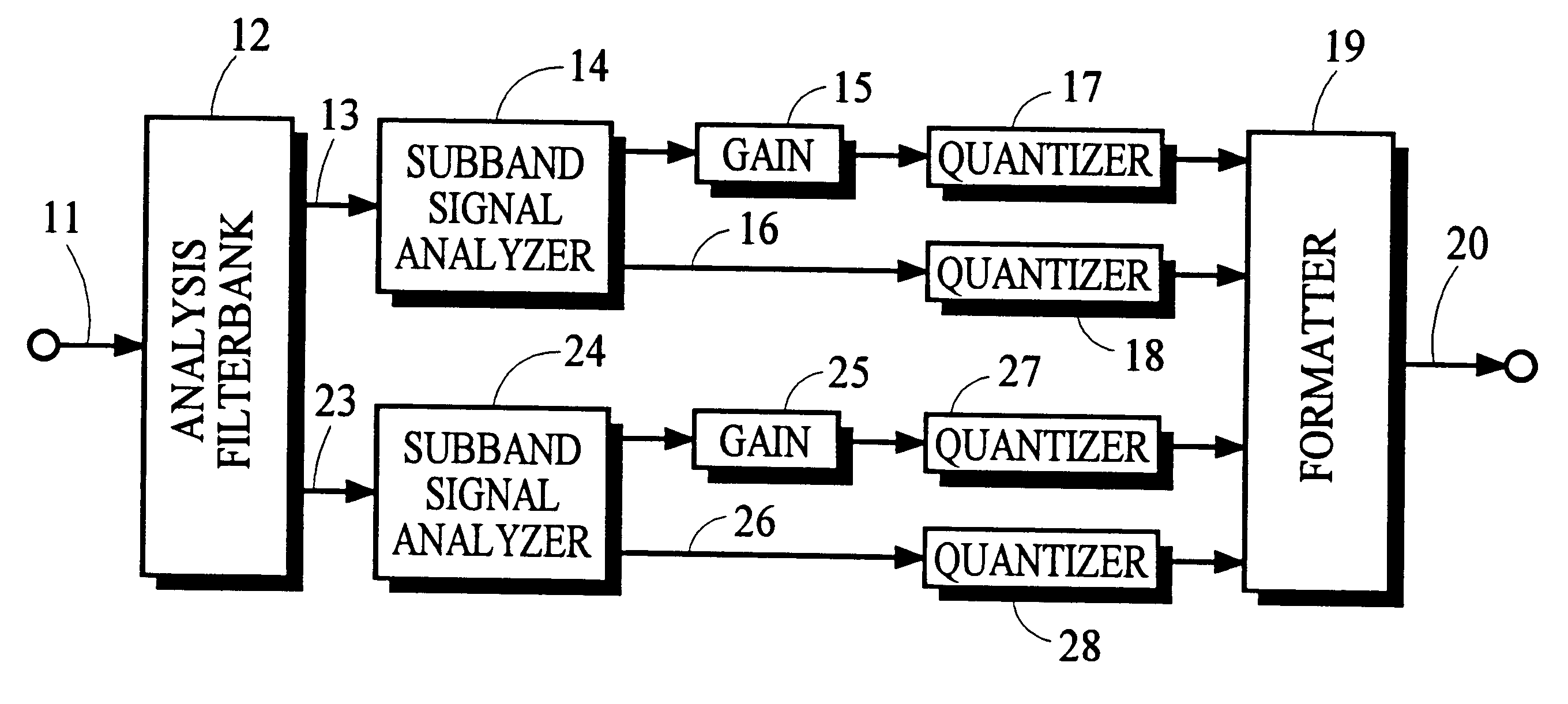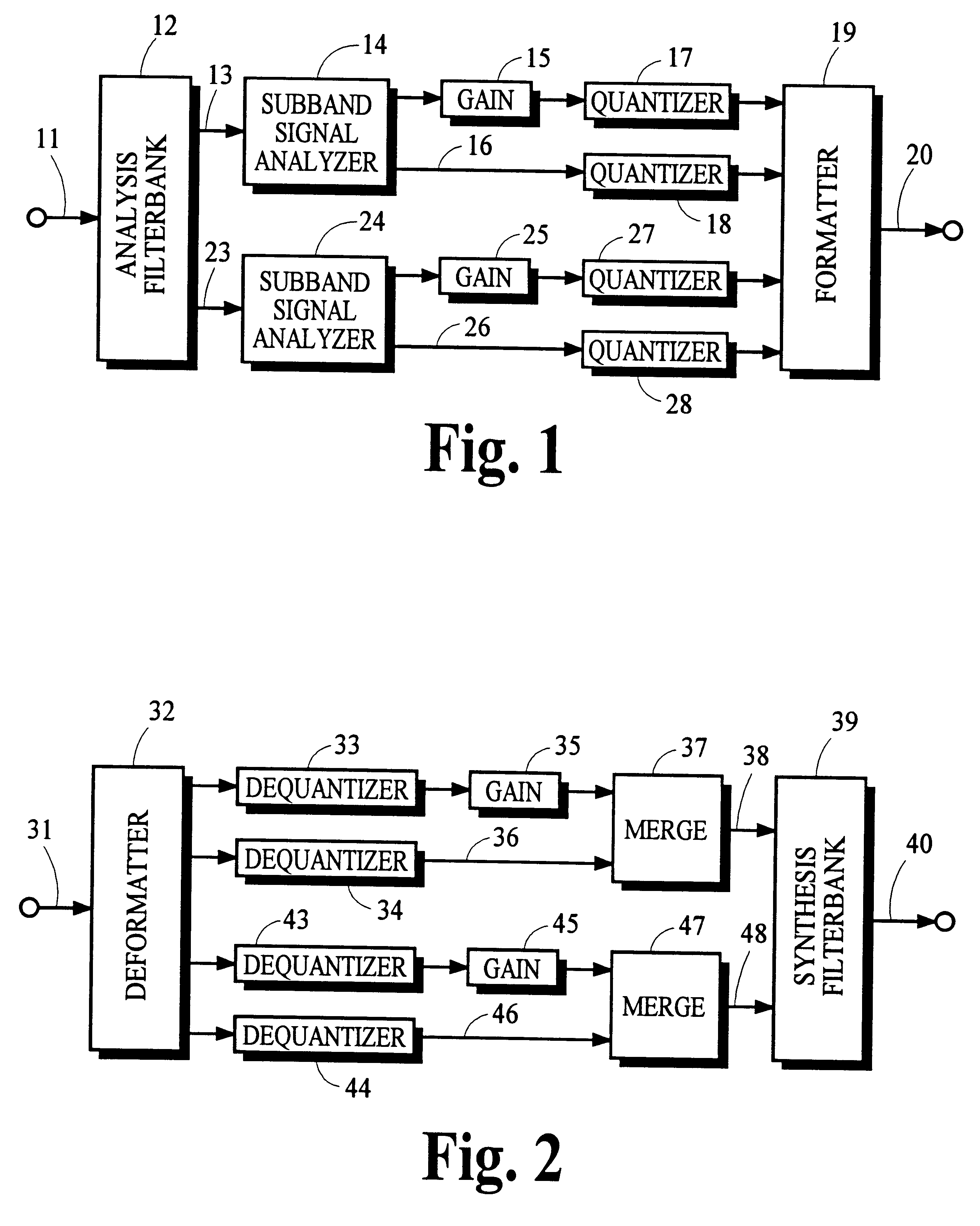Using gain-adaptive quantization and non-uniform symbol lengths for improved audio coding
a gain-adaptive quantization and audio coding technology, applied in color televisions with bandwidth reduction, television systems, instruments, etc., can solve the problems of increasing the information capacity requirements of encoded signals, imposing a higher information capacity than, incurring coding penalties,
- Summary
- Abstract
- Description
- Claims
- Application Information
AI Technical Summary
Benefits of technology
Problems solved by technology
Method used
Image
Examples
Embodiment Construction
A. Coding System
The present invention is directed toward improving the efficiency of representing quantized information such as audio information and finds advantageous application in coding systems that use split-band encoders and split-band decoders. Embodiments of a split-band encoder and a split-band decoder that incorporate various aspects of the present invention are illustrated in FIGS. 1 and 2, respectively.
1. Encoder
a) Analysis Filtering
In FIG. 1, analysis filterbank 12 receives an input signal from path 11, splits the input signal into subband signals representing frequency subbands of the input signal, and passes the subband signals along paths 13 and 23. For the sake of illustrative clarity, the embodiments shown in FIGS. 1 and 2 illustrate components for only two subbands; however, it is common for a split-band encoder and decoder in a perceptual coding system to process many more subbands having bandwidths that are commensurate with the critical bandwidths of the human...
PUM
 Login to View More
Login to View More Abstract
Description
Claims
Application Information
 Login to View More
Login to View More - R&D
- Intellectual Property
- Life Sciences
- Materials
- Tech Scout
- Unparalleled Data Quality
- Higher Quality Content
- 60% Fewer Hallucinations
Browse by: Latest US Patents, China's latest patents, Technical Efficacy Thesaurus, Application Domain, Technology Topic, Popular Technical Reports.
© 2025 PatSnap. All rights reserved.Legal|Privacy policy|Modern Slavery Act Transparency Statement|Sitemap|About US| Contact US: help@patsnap.com



